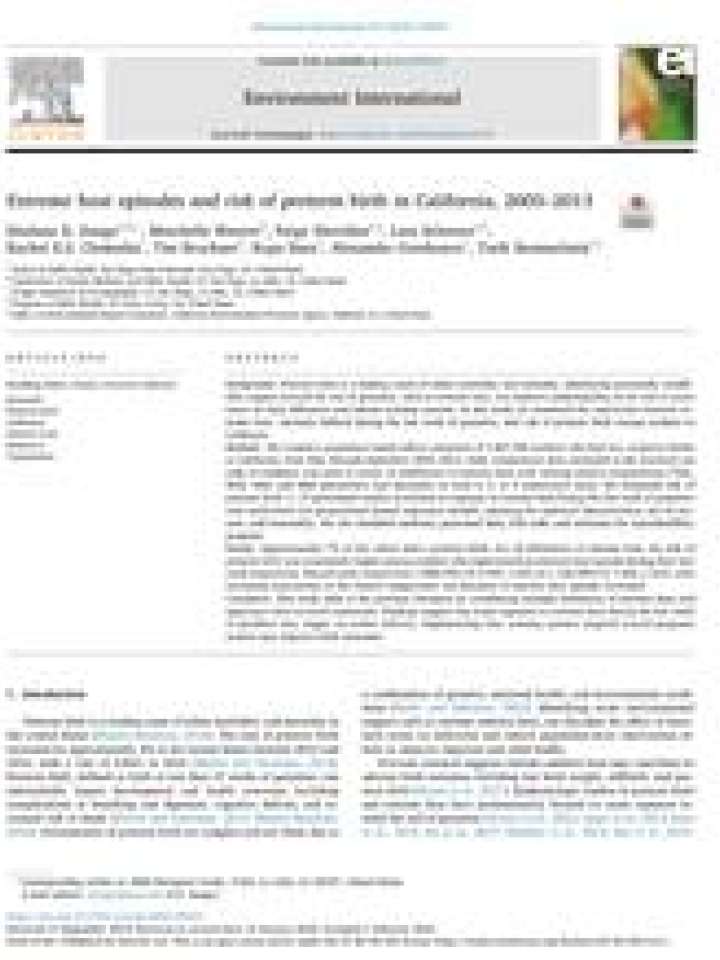Extreme heat episodes and risk of preterm birth in California, 2005–2013
Background
Preterm birth is a leading cause of infant morbidity and mortality. Identifying potentially modifiable triggers toward the end of gestation, such as extreme heat, can improve understanding of the role of acute stress on early deliveries and inform warning systems. In this study it was examined the association between extreme heat, variously defined during the last week of gestation, and risk of preterm birth among mothers in California.
Methods
It was created a population-based cohort comprised of 1,967,300 mothers who had live, singleton births in California, from May through September 2005–2013. Daily temperature data estimated at the maternal zip code of residence was used to create 12 definitions of extreme heat with varying relative temperatures (75th, 90th, 95th, and 98th percentiles) and durations (at least 2, 3, or 4 consecutive days). It was estimated risk of preterm birth (<37 gestational weeks) in relation to exposure to extreme heat during the last week of gestation with multi-level Cox proportional hazard regression models, adjusting for maternal characteristics, sex of neonate, and seasonality. The study also included randomly generated data, SAS code, and estimates for reproducibility purposes.
Results
Approximately 7% of the cohort had a preterm birth. For all definitions of extreme heat, the risk of preterm birth was consistently higher among mothers who experienced an extreme heat episode during their last week of gestation. Hazard ratios ranged from 1.008 (95% CI: 0.997, 1.021) to 1.128 (95% CI: 1.052, 1.210), with increasing associations as the relative temperature and duration of extreme heat episode increased.
Conclusion
This study adds to the previous literature by considering multiple definitions of extreme heat and applying a time-to-event framework. Findings suggest that acute exposure to extreme heat during the last week of gestation may trigger an earlier delivery. Implementing heat warning systems targeted toward pregnant women may improve birth outcomes.
Explore further
